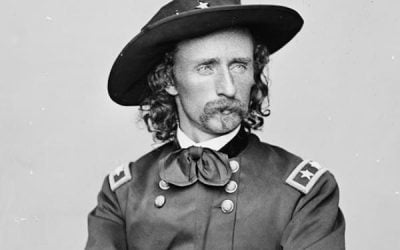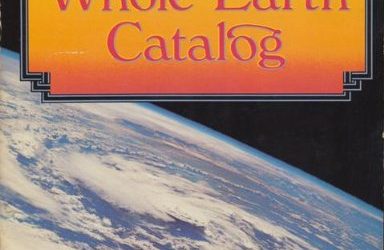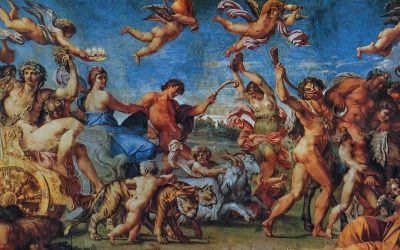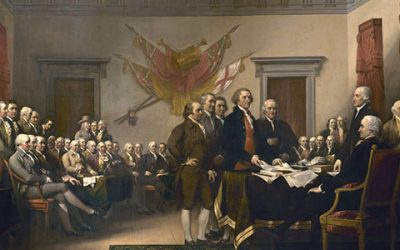By William H. Benson
The Parallel Lives
Of The NOBLE AMERICAN RELIGIOUS THINKERS AND BELIEVERS:
Roger Williams VS. Cotton Mathers
NEW ARTICLES
Language and Literary History
In 1804, Meriwether Lewis and William Clark and their forty-three fellow explorers headed west up the Missouri River, bound for the west coast. As they met a succession of different Native American tribes, they were often amazed by the variety in the languages they heard.
They noted that some had complex grammars, some had unusual vocabularies, some had different pitches or tones for the same words, some spoke consonant clusters without vowels.
In what is now the United States, at the time that Europeans arrived, Native Americans spoke between 300 to 500 diverse languages. Today, most of those have vanished, gone extinct.
Linguists can divide some of their languages into families. For example, the Athabaskan family includes about 38 languages spoken by tribes in Alaska, western Canada, as well as by the Navaho, or the Dine, of Arizona and New Mexico.
What is unusual are the “isolates,” those languages that display no relationship to any other language. For example, the Zuni has no commonalities with any languages that surround them in eastern New Mexico or elsewhere. In total, there are about 30 to 40 isolates in North America.
Linguists still wonder, from where did those Native Americans originate?
What is most misfortunate is that the Native Americans had no written language. No doubt, they produced oral stories, histories, fables that they passed on to their children, but once the next generation stopped speaking their native language, most stories died with them.
One of the world’s larger language families is the Indo-European family. From it, linguists identify eight branches: Indo-Aryan, Iranian, Armenian, Greek, Balto-Slavic, Germanic, Italic, and Celtic. All languages within those branches share a common ancestor.
English, German, and Norwegian belong to the Germanic branch; Spanish, Portuguese, and French to the Italic; Scottish Gaelic and Irish to the Celtic; and Russian to the Balto-Slavic.
Because these European languages possessed a written language, over the centuries each recorded their stories, tales, myths, histories, and built a canon, a body of literary works. Thus, a few languages were bold enough to save their stories, but for others, the world lost their stories.
The greatest act of literary salvation ever occurred in 1623, seven years after Shakespeare expired. John Heminges and Henry Condell, two members of the King’s Men, Shakespeare’s acting company, collected and then published that year Shakespeare’s plays in the First Folio.
The Spanish saved Cervantes’s “Don Quixote,” and also Felix Lope de Vega’s 500 plays and 3000 sonnets, all from the late 16th and early 17th centuries.
Someone saved Plato and Aristotle’s Greek works. Others saved Ovid and Cicero’s Latin works. Yet, others saved Paul’s letters and the four Gospels. On it goes, and the world is richer.
Yiddish is another Germanic language. It began in Germany’s Rhine River valley in the ninth century and was the vernacular of the Jewish people of Central Europe for ten centuries. Mainly German, it was infused with vocabulary from Hebrew and Aramaic.
Prior to the Holocaust in mid-twentieth century, between eleven and thirteen million people spoke Yiddish. Some Yiddish words migrated into English: schtick, chutzpah, shmooze, klutz, kvetch, and anything that ends with “nik,” such as beatnik.
Some 85% of the six million Jewish people whom the Nazis murdered in mid-twentieth century spoke Yiddish. Many survivors came to America, lugging with them their Yiddish books.
However, the next generation preferred English over Yiddish. The Yiddish books were soon disregarded, then discarded, and some were pitched into dumpsters.
In late-twentieth century, a young Jewish guy named Aaron Lansky decided he would rescue the remaining books. He collected an estimated 1.5 million Yiddish books from all over the U.S., at his Yiddish Book Center, and made them available to libraries, universities, collectors.
Rutgers University estimates that in the United States there are only about 250,000 Yiddish speakers remaining, in Israel another 250,000, and elsewhere 100,000.
Languages live for centuries, but then in the face of a brutal attack, they will die off. What lives are the stories within their books. Save their books, save their stories.
Recap of Queen Elizabeth II
Queen Elizabeth II of New ZealandQueen Elizabeth passed away last week, Thursday, September 8, 2022, at 96. She was born on April 21, 1926, and had one sibling, a younger sister named Margaret, born August 21, 1930. When ten, Elizabeth discovered she was next in line...
Vaclav Smil
Vaclav Smil was born in 1943, during World War II, in Czechoslovakia, in the German Protectorate of Bohemia and Moravia. As a teenager, Smil’s parents expected him to chop wood, every four hours, to keep the fires burning in the house’s three stoves, “one downstairs and two up.”
One writer suspected that Smil may have thought then that “this is hardly an efficient way to live.”
Bill Russell and Retirement
Three weeks ago, on July 31, 2022, the former Boston Celtics’ imposing center, Bill Russell, passed away, at age eighty-eight. Over thirteen seasons at Boston, from 1957 to 1969, he collected a total of eleven championship rings, a record never since eclipsed or matched.
When he retired in 1969, he moved to Mercer Island, in Seattle, Washington, and it was there he passed away. For fifty-three years, he enjoyed a well-deserved retirement in the cool Pacific Northwest, although he coached seven seasons in the NBA in the 70s and 80s.
Battle at Rzhev
In the early days of World War II, 1939 to 1940, the Nazi German war machine advanced across eastern Europe, until its soldiers stood on the outskirts of Moscow, deep into the Soviet Union, poised and ready to attack the Russian capital city.
However, the Battle of Moscow stalled when the Soviet’s Red Army found sufficient strength to initiate a counter offensive, at Joseph Stalin’s insistence, that pushed Germany’s 9th Army west, some distance from Moscow. The counter-offensive worked for a time, until the German army stopped.
IN RETROSPECT: Pestilence
IN RETROSPECT: Pestilence On June 26, 1284, officials in a German town called Hamelin hired a musician to rid the town of its rats. The “rat-catcher’s magical flute” hypnotized the rats that followed the piper out of Hamelin’s gates and into the Weser River, where...
1776
The logo for the Broadway musical “1776” features an eaglet inside a broken eggshell, biting down on a flagpole. The small flag atop the pole shows its colors: red and white stripes, and a blue field in the upper left corner. Across the bottom portion of the egg appears a larger English flag.
The musical begins with John Adams alone in the Pennsylvania State House’s belfry, four floors up, leaning on a massive bell. A messenger approaches and informs him that he must return to the hall.
Older Posts
George Armstrong Custer
George Armstrong Custer The Native American tribes had pet names for George Armstrong Custer. The Crow called him Child of the Morning Star, the Cheyenne labeled him Yellow Hair, but the Lakota Sioux referred to him as Long Hair, even though a barber had cut off his...
Stewart Brand: “The Whole Earth Catalog”
Steve Jobs gave the commencement address at Stanford University on June 14, 2005. In it, he told three stories. The first was how he dropped out of Reed College, in Portland, Oregon. The second was how a manager fired him from the company that he and Steve Wozniak had started in a garage.
The third story was about his pending death, due to a pancreatic cancer diagnosis a year before.
Then, after he finished the three stories, he said, “When I was young, there was an amazing publication called “The Whole Earth Catalog,” which was one of the bibles of my generation. It was created by a fellow named Stewart Brand, not far from here in Menlo Park, California.
Mythology
Tony Hillerman grew up in Oklahoma, and attended St. Mary’s Academy, a boarding school intended for Native American girls. One of the few boys permitted to attend, he developed a sensitivity for the various Native American cultures, mythologies, and religions.
Traditions
In recent days, I have re-read David L. Lindsay’s novel, Body of Truth. In it, he describes a cruel and gruesome civil war that terrorized the people of Guatemala for thirty-six years, from 1960 until 1996. It was the federal government, then run by a series of generals, who attacked the poorest of its citizens.
A United Nations report, dated March 1, 1999, declared that, “An estimated 200,000 Guatemalans were killed during the civil war, including at least 40,000 persons who disappeared.”
Truth vs. lies
It might be fabricated, but a story I heard years ago was that Bill Cosby warned a young Oprah Winfrey, to “always balance your own check book.” In other words, he cautioned her to trust only herself, and not any paid employee, with that simple task.
Another piece of advice for the up-and-coming, who are now, after years of struggle, experiencing some success, “Do not believe your own press reports.” In other words, no matter how wonderful and great the journalists and reporters say you are, keep in reserve some small measure of humility.
A tale of two cities
A quote I read years ago said, “The family surname of the betrothed says much about the success of the marriage.” That idea may come near to a singular truth in a general way, despite plenty of examples to contradict it. Yet, I dare suggest something similar, but in a political sense.
How a man or woman identifies his or her citizenship–to what city he or she claims allegiance–tells much about his or her innermost thoughts, ideas, conclusions, and reasoning skills. In other words, tell me the name of your city, and I can predict the ideas that you think and believe.
Yet, not always. Again, outliers who think for themselves.
There were two cities in ancient Greece: Athens and Sparta. The Athenians practiced trade, they valued art and culture, and they ruled themselves by democracy of voters, legislators, and written laws. The Spartans though encouraged a militant society, based on farming and conquering.

One of University of Northern Colorado’s 2020 Honored Alumni
William H. Benson
Local has provided scholarships for history students for 15 years
A Sterling resident is among five alumni selected to be recognized this year by the University of Northern Colorado. Bill Benson is one of college’s 2020 Honored Alumni.
Each year UNC honors alumni in recognition for their outstanding contributions to the college, their profession and their community. This year’s honorees were to be recognized at an awards ceremony on March 27, but due to the COVID-19 outbreak that event has been cancelled. Instead UNC will recognize the honorees in the fall during homecoming Oct. 10 and 11……
Newspaper Columns
The Duodecimal System
For centuries, the ancient Romans calculated sums with their clunky numerals: I, V, X, L, C, D, and M; or one, five, ten, 50, 100, 500, and 1,000. They knew nothing better.
The Thirteenth Amendment
On Jan. 1, 1863, President Abraham Lincoln signed the Emancipation Proclamation, and by it, he declared that “all persons held as slaves” within the rebellious states “are and henceforward shall be free.” Lincoln’s Proclamation freed some 3.1 million slaves within the Confederacy.
The Fourteenth Amendment
After Congress and enough states ratified the thirteenth amendment that terminated slavery, Congress passed the Civil Rights Act of 1866. This law declared that “all people born in the United States are entitled to be citizens, without regard to race, color, or previous condition of slavery or involuntary servitude.” The Act equated birth to citizenship.
The New-York Packet and the Constitution
Jill Lepore, the Harvard historian, published her newest book a month ago, These Truths: A History of the United States. In a short introduction, she describes in detail the Oct. 30, 1787 edition of a semi-weekly newspaper, The New-York Packet.
Mr. Benson’s writings on the U.S. Constitution are a great addition to the South Platte Sentinel. Its inspiring to see the history of the highest laws of this country passed on to others.
– Richard Hogan
Mr. Benson, I cannot thank you enough for this scholarship. As a first-generation college student, the prospect of finding a way to afford college is a very daunting one. Thanks to your generous donation, my dream of attending UNC and continuing my success here is far more achievable
– Cedric Sage Nixon
Donec bibendum tortor non vestibulum dapibus. Cras id tempor risus. Curabitur eu dui pellentesque, pharetra purus viverra.
– Extra Times
FUTURE BOOKS
- Thomas Paine vs. George Whitefield
- Ralph Waldo Emerson vs. Joseph Smith
- William James vs. Mary Baker Eddy
- Mark Twain vs. Billy Graham
- Henry Louis Mencken vs. Jim Bakker










